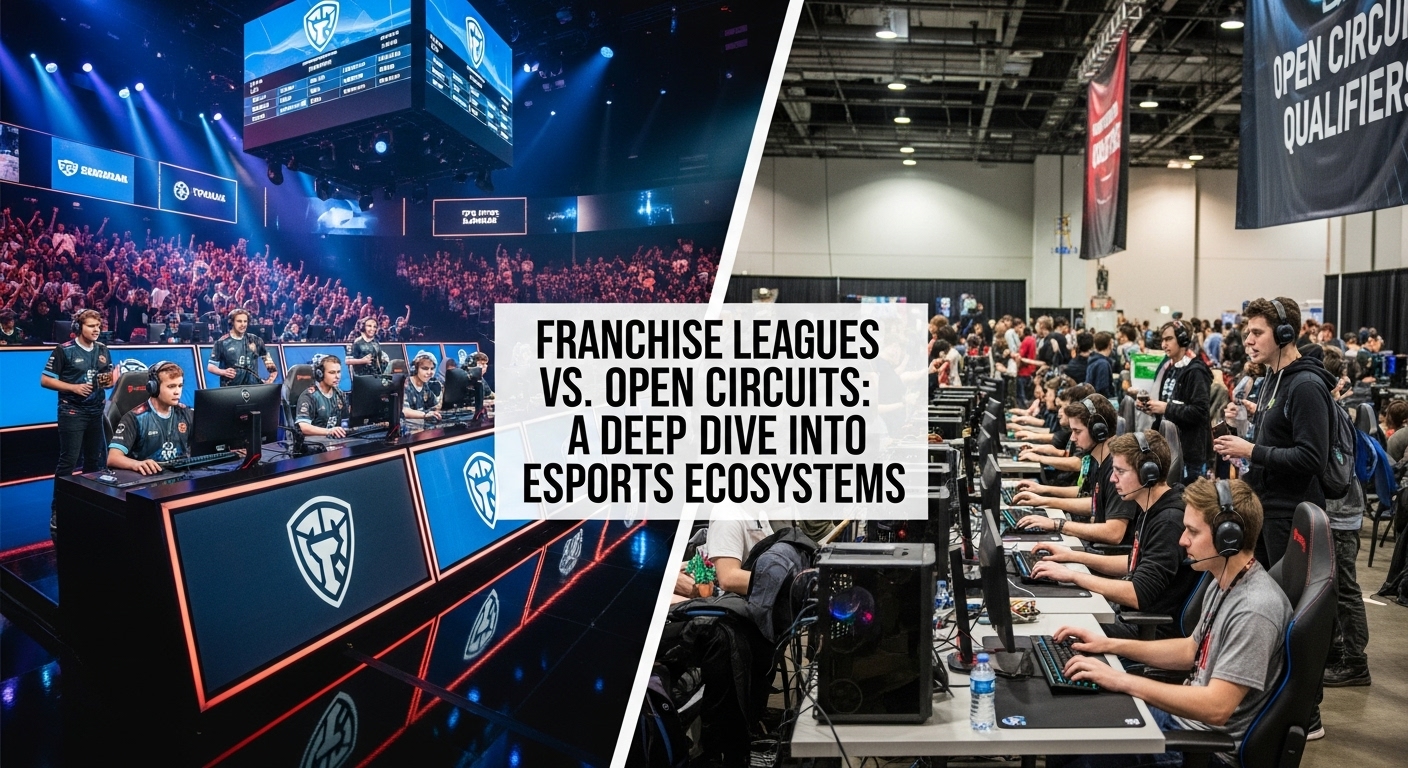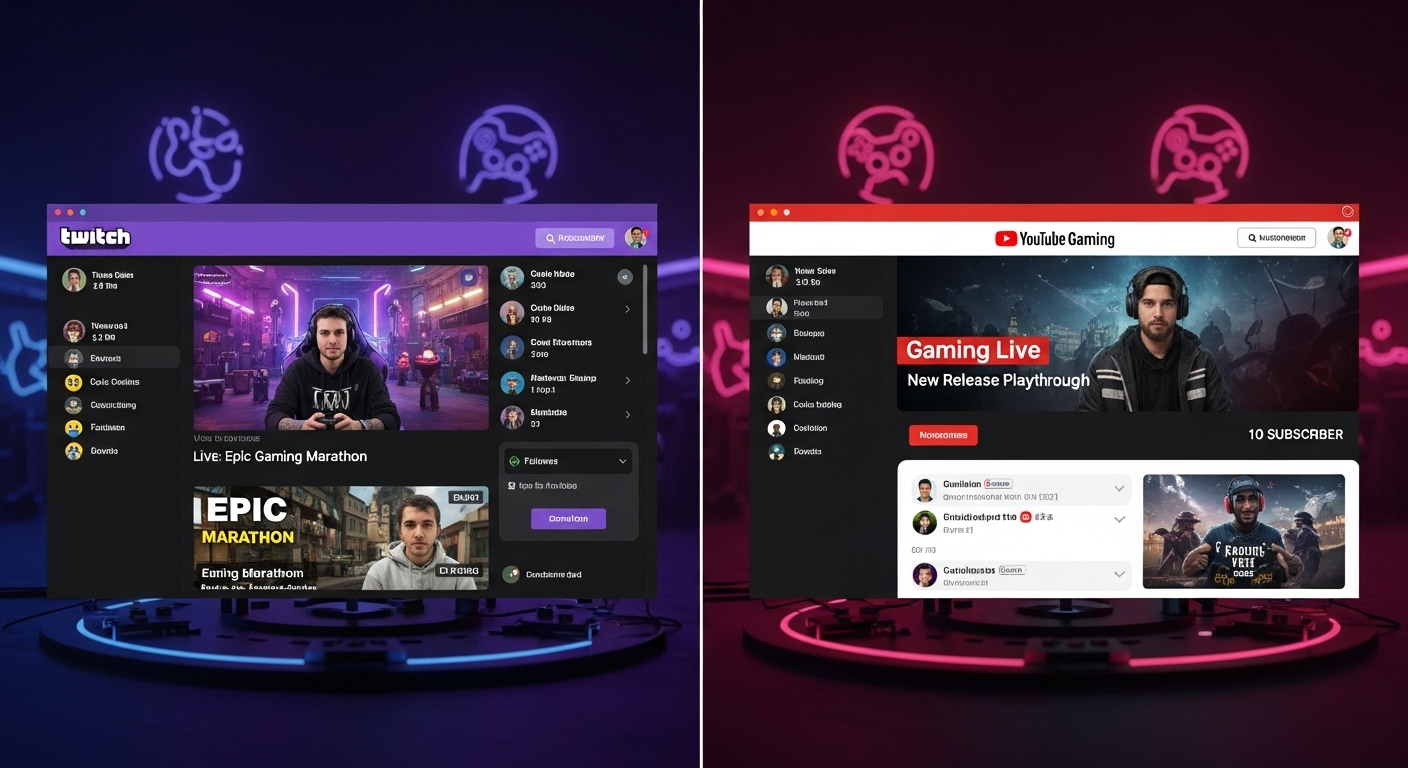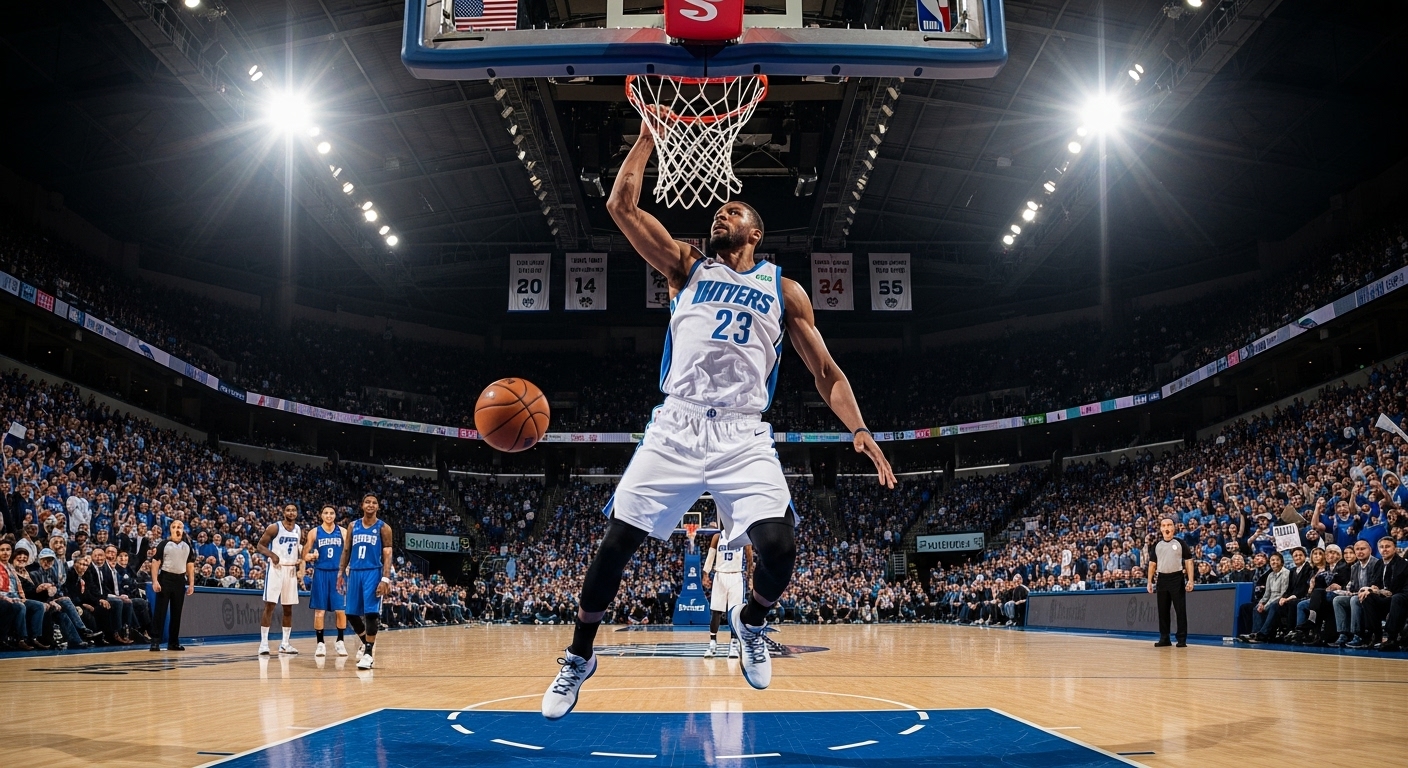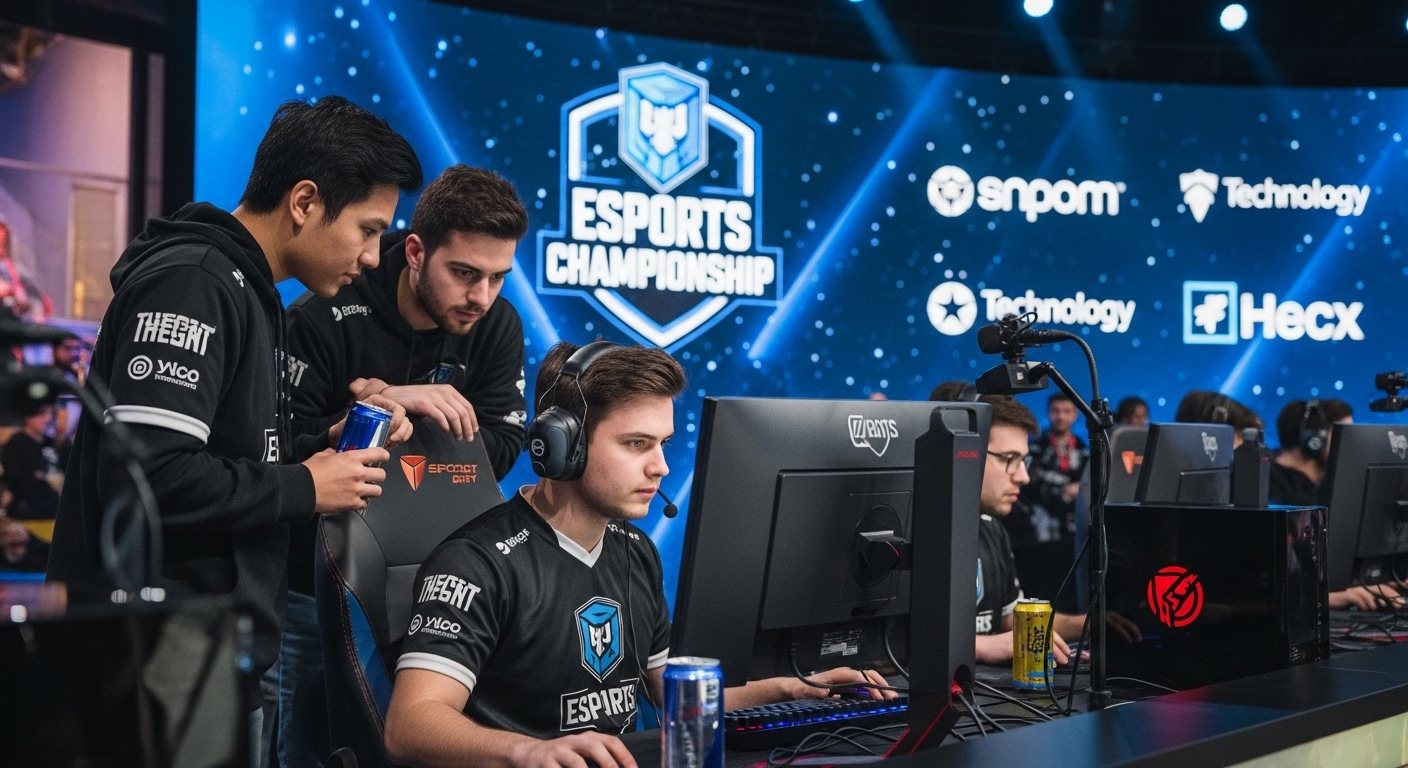Esports has rapidly evolved from grassroots LAN gatherings to global events that rival traditional sports in production, prize pools, and viewership. With this growth has come experimentation in how tournaments and leagues are structured. Two primary models dominate the competitive landscape: franchise leagues and open circuits. Each carries distinct advantages, disadvantages, and philosophies regarding player development, fan engagement, and long-term sustainability.
This blog post takes an in-depth look at both models, their history, real-world examples, and their implications for the future of esports.
1. Introduction: Why Structure Matters in Esports
Unlike traditional sports, which have matured over decades or even centuries, esports is still young and rapidly changing. The way competitions are structured impacts nearly every aspect of the industry:
- Player Careers – accessibility, salaries, and progression from amateur to pro.
- Team Organizations – financial stability, sponsorship deals, and long-term investments.
- Game Publishers – control over intellectual property and competitive integrity.
- Fans – accessibility, entertainment value, and connection with favorite players or teams.
The question of franchise leagues vs. open circuits is central to esports’ growth because it defines how opportunity, money, and talent flow within the ecosystem.
2. What Are Franchise Leagues?
Franchise leagues are esports ecosystems modeled after traditional sports leagues like the NBA, NFL, or Premier League. They are closed systems where a set number of teams buy into permanent league spots.
Key Features of Franchise Leagues:
- Permanent Membership – Teams buy a slot in the league (often for millions of dollars) and cannot be relegated.
- Revenue Sharing – Teams and publishers often share revenue from sponsorships, media rights, and merchandise.
- Stability – Players, teams, and sponsors benefit from guaranteed participation.
- Central Governance – The publisher or league operator controls rules, scheduling, and branding.
Notable Examples:
- Overwatch League (OWL) – Blizzard’s attempt to create a global, city-based franchise system.
- Call of Duty League (CDL) – Also Blizzard’s creation, mirroring OWL’s city-based model.
- League of Legends LCS, LEC, LCK, LPL – Riot Games transformed its competitive structure into a franchised model in major regions.
The Vision:
The idea behind franchise leagues is to professionalize esports in a way familiar to investors and advertisers. By providing security—no risk of relegation—teams can confidently invest in infrastructure, content, and talent.
3. What Are Open Circuits?
Open circuits, also known as open ecosystems, are structured more like grassroots competitions or traditional European soccer leagues.
Key Features of Open Circuits:
- Open Qualification – Anyone can enter and, through skill, qualify for major tournaments.
- Relegation and Promotion – Teams can rise or fall depending on performance.
- Fluid Membership – Organizations must consistently perform to stay at the top.
- Tournament-Based – Competition often revolves around a series of events rather than a fixed league.
Notable Examples:
- Counter-Strike: Global Offensive (CS:GO) – Valve’s open circuit with tournaments like ESL Pro League, BLAST Premier, and the Major system.
- Dota 2’s The International – The open qualifier system allows any team in the world to qualify for the largest esports event.
- Rocket League (pre-2021) – Featured open qualifiers for its World Championship.
The Vision:
Open circuits aim to maximize accessibility and meritocracy. Any team or player can, theoretically, reach the top through skill alone. This creates compelling narratives, from underdog stories to surprise upsets, and keeps the scene vibrant.
4. Advantages of Franchise Leagues
- Financial Stability – Guaranteed league spots attract big sponsors and investors. Teams don’t risk going broke due to relegation.
- Player Security – Salaries, benefits, and long-term contracts are more common.
- Brand Building – With permanent slots, organizations can focus on developing long-term fanbases.
- Professional Production – Centralized league management often leads to polished broadcasts and consistent scheduling.
- Attracting Traditional Sports Models – Familiar to non-endemic investors, making it easier to secure funding.
5. Advantages of Open Circuits
- Accessibility – Anyone can compete and potentially reach the biggest stage.
- Meritocracy – Performance determines success, not buy-ins.
- Dynamic Narratives – Underdog stories and constant roster shuffles keep fans engaged.
- Lower Barrier to Entry for Teams – Organizations don’t need millions to buy in, encouraging diversity.
- Grassroots Development – Creates a pipeline for new talent and emerging regions.
6. Disadvantages of Franchise Leagues
- High Buy-In Costs – Only wealthy investors can enter, excluding smaller organizations.
- Lack of Meritocracy – Underperforming teams stay in the league due to buy-ins.
- Risk of Stagnation – Without relegation, competitiveness may decline.
- Fan Disconnect – Fans may feel alienated if their region or grassroots teams can’t participate.
- Dependence on Publisher Success – If the publisher mismanages the league, teams suffer (e.g., Overwatch League struggles).
7. Disadvantages of Open Circuits
- Financial Instability – Teams risk bankruptcy if they fail to qualify for big events.
- Short Player Careers – Inconsistent earnings and lack of contracts can hurt sustainability.
- Unpredictable Scheduling – Decentralized tournaments can overwhelm fans with too much or too little content.
- Sponsor Hesitancy – Investors may be wary due to lack of guaranteed visibility.
- Burnout – Constant travel and qualifiers can exhaust players and staff.
8. Case Study: Riot’s Franchise Model vs. Valve’s Open Circuit
Riot Games (Franchise Leagues)
- Transitioned LCS and other leagues to a franchise model in 2018.
- Teams like TSM, Cloud9, and Team Liquid benefited from stability and revenue sharing.
- Built global competitions like Worlds, with massive fan engagement.
- Criticism: Some regions (like NA’s LCS) struggled with competitiveness and declining viewership, raising questions about franchising’s effectiveness.
Valve (Open Circuit)
- CS:GO thrives on open competition. ESL, BLAST, and independent organizers all run events.
- The International (Dota 2) uses open qualifiers, ensuring grassroots participation.
- Open circuits keep the scene fresh and unpredictable.
- Criticism: Lack of stability makes it harder for players and teams to sustain long-term careers.
9. Impact on Players
- Franchise Leagues: Players often enjoy higher salaries, healthcare benefits, and unionization efforts. However, they risk being “locked out” if they aren’t signed by one of the franchise teams.
- Open Circuits: Players have more chances to prove themselves but face inconsistent pay and job security. Many careers end quickly due to financial struggles.
10. Impact on Fans
- Franchise Leagues: Offer consistent scheduling, easier-to-follow storylines, and polished broadcasts. But fans lose out on Cinderella stories where unknown teams topple giants.
- Open Circuits: Provide excitement, variety, and grassroots narratives. However, the lack of centralized organization can make it harder for casual fans to follow.
11. The Publisher’s Role
Franchise leagues benefit publishers by providing control and monetization opportunities. Riot, for example, can enforce broadcast deals, create exclusive partnerships, and build a unified product.
Open circuits, on the other hand, often mean less direct control for publishers but more organic community engagement. Valve takes a hands-off approach, letting third-party organizers thrive, which in turn builds loyalty among fans.
12. The Hybrid Model: A Possible Middle Ground
Some esports ecosystems are experimenting with hybrid models that combine aspects of both franchising and open circuits:
- Rocket League (post-2021): Structured a seasonal league while still allowing open qualification for majors.
- VALORANT Champions Tour (VCT): Uses partnered leagues for stability but includes open qualifiers for international events.
- Fortnite Competitive: Entirely publisher-run, with regular open events alongside major finals.
The hybrid approach aims to balance stability with accessibility, offering long-term security for teams while keeping opportunities open for new talent.
13. Lessons from Traditional Sports
Esports often looks to traditional sports for guidance, but the comparison isn’t always straightforward.
- NBA/NFL (Franchise): Stability and revenue sharing built global brands, but no relegation system.
- European Soccer (Open Circuit): Promotion and relegation fuel competitiveness and grassroots growth but can financially devastate relegated clubs.
Esports is still determining which model (or mix) best suits its unique environment.
14. The Future: Where Do We Go from Here?
- Franchise Leagues may need to lower barriers for new teams or create developmental leagues to prevent stagnation.
- Open Circuits must explore ways to provide financial stability, perhaps through publisher-backed revenue sharing.
- Hybrid Models may become the norm, offering the best of both worlds.
Ultimately, the future likely lies in flexibility, with different games adopting the model that best fits their community, player base, and audience.
15. Conclusion
The debate between franchise leagues and open circuits reflects the broader tension in esports: balancing stability with accessibility, and professionalism with grassroots authenticity.
- Franchise leagues bring in investors, polished production, and financial security—but risk alienating fans and stifling competition.
- Open circuits keep esports exciting, accessible, and merit-based—but often lack the financial structure to support players and teams long-term.
- Hybrid approaches may represent the future, blending stability with inclusivity.
As esports continues to mature, the ecosystem that thrives will be the one that balances these competing needs most effectively.




